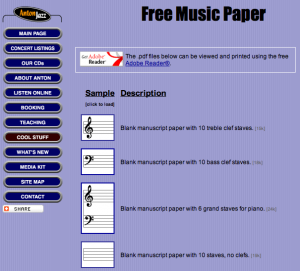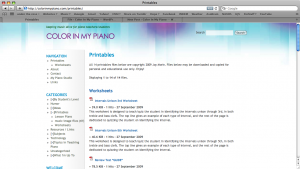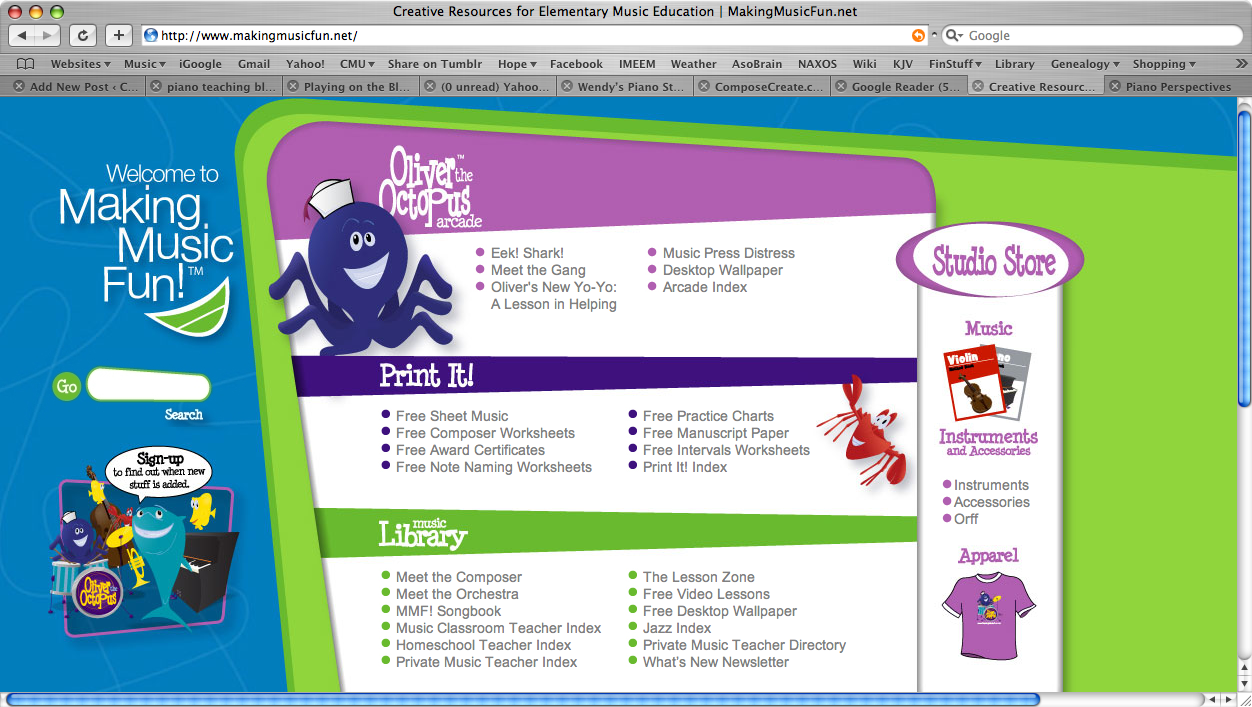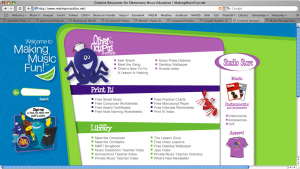 Just thought I’d share a little tip today about where to find THE best free manuscript paper (in my humble opinion): Antonjazz.com
Just thought I’d share a little tip today about where to find THE best free manuscript paper (in my humble opinion): Antonjazz.com
There are hundreds of sites out there that offer free manuscript paper (aka staff paper). But this is my absolute favorite.
Now, you must know, I do a little composing every now and then. And I have discovered that I am a very picky manuscript paper person. It has to be just right.
I always print the “Blank manuscript paper with 10 staves, no clefs” paper. It’s very economical and flexible. It’s professional and clean-looking.
Does this paper work for young students? Not so much. I’d recommend finding something bigger. With wider spaces. (Suggestions, anyone?)
But I love this manuscript paper for myself and my older students to use. It’s perfect for that.
—————
Do you have a favorite manuscript paper, as I do? Please let us know by commenting below.









